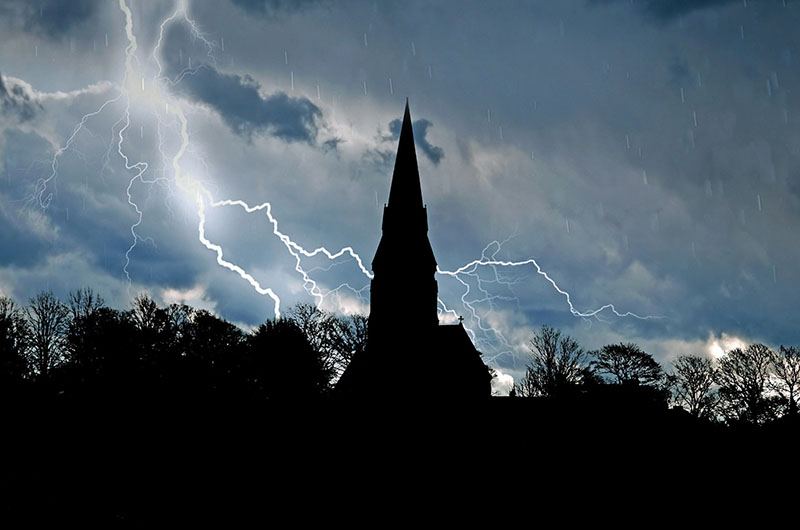Summertime and the lightning is striking!
 With summer in the offing there is actually a greater risk of thunderstorms and lightning strikes. That is because they occur in specific conditions, requiring two basic elements – moisture and rapidly-rising warm air. High humidity combines with warm temperatures to create a large amount of warm, moist air that can form a thunderstorm as it rises into the atmosphere.
With summer in the offing there is actually a greater risk of thunderstorms and lightning strikes. That is because they occur in specific conditions, requiring two basic elements – moisture and rapidly-rising warm air. High humidity combines with warm temperatures to create a large amount of warm, moist air that can form a thunderstorm as it rises into the atmosphere.
Adrian Brown of lightning protection experts Lightning Strike Ltd has researched the causes of the increase in storms and explains it in his blog.
In summer, says Adrian, the number of hours of sunlight is higher than during the winter, meaning the sun is heating the earth for a longer period of time. The laws of physics state that warm air will rise: an important factor for thunderstorms, as the warm air can rise for miles, creating a towering cumulonimbus cloud.
Cumulonimbus clouds are also known as thunderclouds, Adrian explains: “They are usually characterised by their anvil shaped, icy top and can exist throughout the entire height of the troposphere.
“The troposphere is the lowest region of the earth’s atmosphere, extending to a height of around 6km to 10km from the earth’s surface, as far as the lower boundary of the stratosphere. Cumulonimbus clouds are the only clouds that can create hail, heavy rain and thunderstorms.“Thunderstorms develop when the atmosphere is unstable.
When warm air exists underneath colder air, it cools and condenses as it rises, forming small droplets of water. When the upward surge of warm air is rapid, the resulting water vapour quickly forms a cumulonimbus cloud. This type of cloud can form in less than one hour.”
That explains the thunderstorm; but why does lightning form?
Adrian goes on to explain: “When the warm air continues to rise, larger droplets are formed as the smaller ones combine. They will then freeze to form crystals of ice. When the droplets get heavier and can no longer be supported by the updraught of air, they will fall as hail. When the hail moves in the cloud, it rubs against smaller, positively-charged ice crystals, thus picking up a negative charge. This leads to a negative charge forming where the hail collects at the base of the cloud and a positive charge forming at the top of the cloud, where the lighter ice crystals gather.
“The negatively-charged hail is attracted to the earth’s surface and when the attraction is too great, the negative and positive charges will come together, resulting in a flash of lightning – also known as a lightning bolt or a lightning strike.”
• To read the full blog visit www.lightningstrikeltd.co.uk/blog













